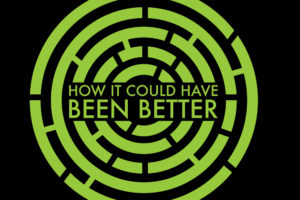
Like most post-apocalyptic young adult novels, “The Maze Runner” starts with an interesting premise, then quickly dissolves into a convoluted, exposition-heavy blob that readers must wade through in order to find a satisfying payoff that doesn’t exist. “The Maze Runner” has an overly complex world, underdeveloped characters and a plot stretched so thin, it virtually disappears once Thomas, the main character, exits that foreboding underground elevator. Characters make decisions in service to this hole-ridden plot which makes them difficult to invest in. The major plot point borrows from the time honored YA tradition of blaming an authoritarian parent entity. Only with this trope is it possible to build an entire story off of grown-ups torturing children and potential mankind’s last hope in a series of Matrix style trials. In spite of it’s shortcomings, “The Maze Runner”’s adult-free world had promise. Here are two ways it could have been better.
1. If WICKED didn’t exist
WICKED, the main antagonist of the series, was an illogical waste of time. The Glade was a much more compelling aspect of this story. This presumably computer-generated place mimicked nature so perfectly that crops were able to grow. The grievers were not nearly as frightening as the collapse of this Edenic space. Without WICKED, “The Maze Runner” could have been a story in which our sheltered characters were forced to either fix their restrictive paradise or embark on a journey into the real world. Making this decision would have created conflict and spawned character development. Thomas or Theresa could have led these characters away from the idyllic matrix to the inhospitable environment of the outside world. As they encountered new characters, these naive children would have recognized the inherent privilege afforded to the them by the Glade. Rather than some abstract illogical “villain,” conflict could have come from the characters as they decided the best way to survive in a new world.
2. If it was a post-apocalyptic “Peter Pan”
There were so many parallels to “Peter Pan” in this book, I expected and slightly hoped that Captain Hook would emerge from the maze. Peter Pan naturally invokes a sense of whimsy and “The Maze Runner” could have translated that energy into a dark fantasy dystopian never never land. By adopting a similar approach to Danielle Paige’s “Dorothy Must Die,” “The Maze Runner” could have had a fully developed world with a rich tapestry of characters. Instead of WICKED, there could have been a futuristic Captain Hook and his deadly band of pirates, hacking the idyllic world occupied by our lost boys and transforming it into a landscape filled with monsters. The emerging hero would not be Thomas, but Theresa, the lone girl among boys who was not content with being a den mother. The protagonist could have been a cool girl who codes who risked everything to save a cybernetic never never land.
“The Maze Runner” had an interesting premise, but it suffered for lacking the story to match. By reimagining the landscape and picking a new hero, it could have been a fully realized series.


























